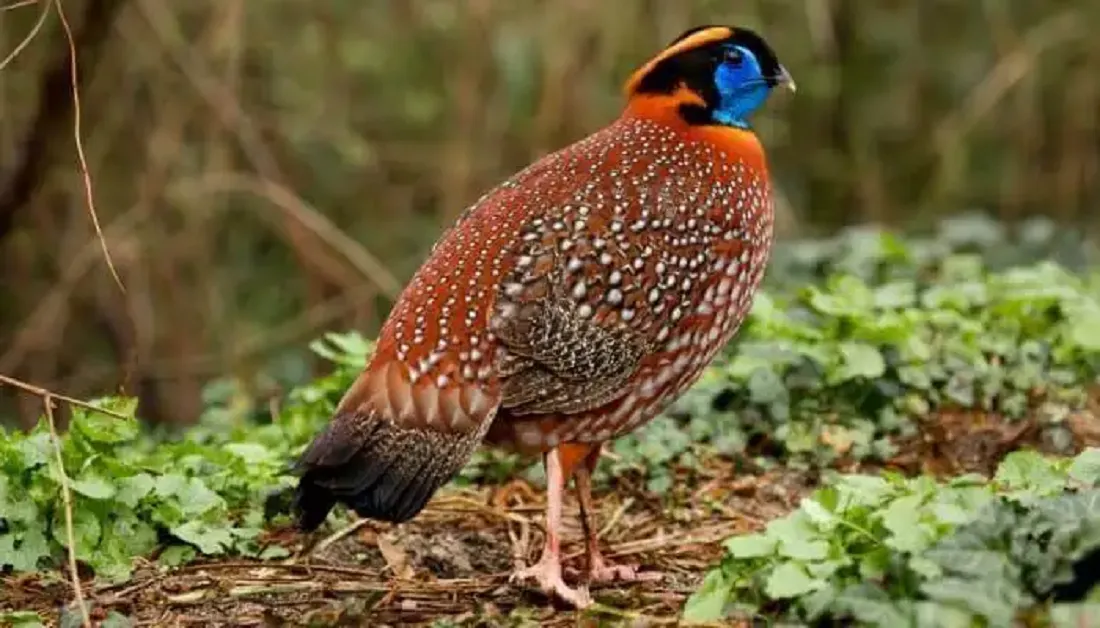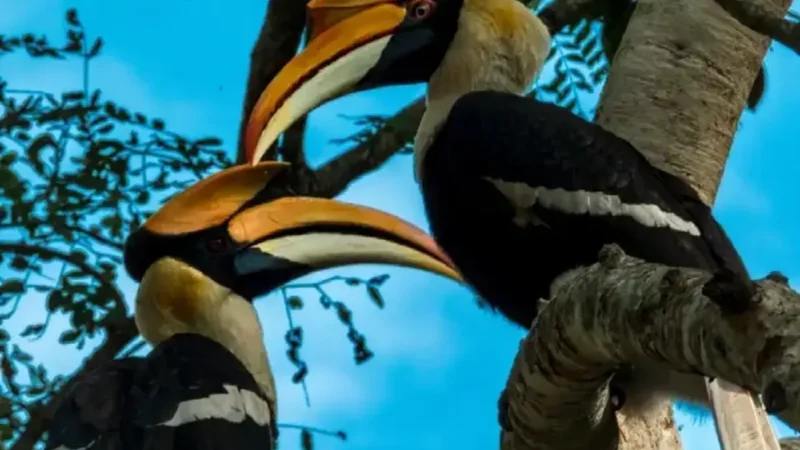6 Amazing Wildlife Sanctuary in Nagaland

Table of Contents
ToggleNagaland Wildlife Sanctuary :
Nestled in the northeastern corner of India, Nagaland is a land of enchantment, where rugged hills and lush green valleys cradle a world of incredible biodiversity. While Nagaland is celebrated for its vibrant culture and warm-hearted people, it is also a treasure trove of natural wonders. Among these wonders are its wildlife sanctuaries, where the untamed beauty of nature reigns supreme.
In this blog, we embark on a virtual journey to discover the mystical world of Nagaland’s wildlife sanctuaries. These sanctuaries provide refuge to some of India’s most endangered species and offer a glimpse into the state’s ecological heritage. From the mighty elephants that roam Intanki Wildlife Sanctuary to the vibrant plumage of the Blyth’s tragopan in Pulie Badze Wildlife Sanctuary, Nagaland’s sanctuaries are a haven for both wildlife enthusiasts and nature lovers.
Wildlife Sanctuary of Nagaland :
1- Intanki Wildlife Sanctuary
Here is some information about the Intanki Wildlife Sanctuary (also known as Ntangki Wildlife Sanctuary):
- It is located in the Peren district of Nagaland, India.
- It was established in 1993 and covers an area of 202.02 square kilometers.
- It is home to various wildlife, including tigers, elephants, hoolock gibbons, sambar, barking deer, wild boars, and many species of birds.
- It is also an important habitat for the endangered hispid hare.
- The sanctuary is a popular tourist destination, especially for trekking and camping.
Some of the popular activities in the Intanki Wildlife Sanctuary include:
- Trekking: Several trekking trails in the sanctuary range from easy to challenging.
- Camping: There are several camping sites in the sanctuary, where you can enjoy the forest’s peace.
- Bird watching: The sanctuary is home to over 200 species of birds, including the Blyth’s Tragopan, the Ward’s trogon, and the rufous-necked hornbill.
- Wildlife viewing: There are several viewpoints in the sanctuary where you can observe the animals in their natural habitat.
The best time to visit the Intanki Wildlife Sanctuary is during the dry season, from October to April. The temperatures are mild during this time, and the trails are less muddy.
If you are planning to visit the Intanki Wildlife Sanctuary, it is essential to be aware of the following:
- The sanctuary is open from 6am to 6pm.
- There is an entrance fee of INR 20 for adults and INR 10 for children.
- You must obtain a permit from the forest department before visiting the sanctuary.
- Hiring a guide to help you navigate the trails and spot the wildlife is advisable.
2- Fakim Wildlife Sanctuary
Here is some information about the Fakim Wildlife Sanctuary in Nagaland:
- It is located in the Tuensang district of Nagaland, India.
- It was established in 1986 and covers an area of 640 square kilometers.
- It is home to various wildlife, including elephants, tigers, leopards, red pandas, sambar, barking deer, wild boars, and many species of birds.
- It is also an important habitat for the endangered hispid hare.
- The sanctuary is a popular tourist destination, especially for trekking and camping.
Some of the popular activities in the Fakim Wildlife Sanctuary include:
- Trekking: There are several trekking trails in the sanctuary, ranging from easy to challenging.
- Camping: There are several camping sites in the sanctuary, where you can enjoy the quiet of the forest.
- Bird watching: The sanctuary is home to over 200 species of birds, including the Blyth’s Tragopan, the Ward’s trogon, and the rufous-necked hornbill.
- Wildlife viewing: There are several viewpoints in the sanctuary where you can observe the animals in their natural habitat.
- Nature photography: The sanctuary is a great place to take stunning scenery and wildlife photos.
The best time to visit the Fakim Wildlife Sanctuary is during the dry season, from October to April. The temperatures are mild during this time and the trails are less muddy.
3- Pulie Badze Wildlife Sanctuary
Here is some information about the Pulie Badze Wildlife Sanctuary in Nagaland:
- It is located in the Kohima district of Nagaland, India.
- It was established in 1980 and covers an area of 9 square kilometers.
- It is named after the 2,296-metre (7,533 ft) mountain Pulie Badze, which means “Pulie’s Seat”, named after the legendary folktale character “Pulie”.
- The sanctuary is home to various birds, including the Blyth’s Tragopan, the Ward’s trogon, and the rufous-necked hornbill.
- It is also home to many mammals, such as the barking deer, the wild boar, and the sambar deer.
- The sanctuary is a popular tourist destination for bird watching and nature photography.
The best time to visit the Pulie Badze Wildlife Sanctuary is during the dry season, from October to April. The temperatures are mild during this time and the trails are less muddy.
4- Satoi Range Wildlife Sanctuary
Here is some information about the Satoi Range Wildlife Sanctuary in Nagaland, India:
- It is located in the Zunheboto district of Nagaland.
- It was established in 1985 and covers an area of 64 square kilometers.
- It is home to various wildlife, including the Blyth’s Tragopan, the goral, the serow, and the sambar deer.
- It is also home to many birds, such as the Ward’s trogon, the rufous-necked hornbill, and the laughing thrushes.
- The sanctuary is a popular tourist destination for trekking, camping, and nature photography.
The best time to visit the Satoi Range Wildlife Sanctuary is during the dry season, from October to April. The temperatures are mild during this time and the trails are less muddy.
5- Rangapahar Wildlife Sanctuary
Here is some information about the Rangapahar Wildlife Sanctuary in Nagaland, India:
- It is located in the Dimapur district of Nagaland.
- It was established in 1968 and covers an area of 120 square kilometers.
- It is home to various wildlife, including elephants, tigers, leopards, sambar deer, barking deer, wild boar, and many species of birds.
- It is also an important habitat for the endangered hispid hare.
- The sanctuary is a popular tourist destination, especially for trekking and camping.
Some of the popular activities in the Rangapahar Wildlife Sanctuary include:
- Trekking: Several trekking trails in the sanctuary range from easy to challenging.
- Camping: There are several camping sites in the sanctuary, where you can enjoy the peace and quiet of the forest.
- Bird watching: The sanctuary is home to over 200 species of birds, including the Blyth’s Tragopan, the Ward’s trogon, and the rufous-necked hornbill.
- Wildlife viewing: There are several viewpoints in the sanctuary where you can observe the animals in their natural habitat.
- Nature photography: The sanctuary is a great place to take stunning scenery and wildlife photos.
The best time to visit the Rangapahar Wildlife Sanctuary is during the dry season, from October to April. The temperatures are mild during this time, and the trails are less muddy.
6- Ghosu Bird Sanctuary
Here is some information about the Ghosu Bird Sanctuary in Nagaland, India.
- It is located in the Zunheboto district of Nagaland.
- It was established in 1987 and covers an area of 650 hectares.
- It is home to a variety of birds, including the Blyth’s Tragopan, the Ward’s trogon, the rufous-necked hornbill, the great barbet, the spot-breasted scimitar-babbler, and the little bunting.
- It is also home to many mammals, such as the Himalayan black bear, the Himalayan serow, the hog badger, and the Chinese pangolin.
- The sanctuary is a popular tourist destination for bird watching and nature photography.
The best time to visit the Ghosu Bird Sanctuary is during the monsoons, from June to September. This is when the birds are most active and the sanctuary is greenest.
Final Note:
Nagaland’s wildlife sanctuaries offer us a profound connection to the untamed world. They remind us that amidst the ever-expanding concrete jungles of the modern age, there are still sanctuaries where life flourishes in its most raw and unfiltered form. They beckon us to listen to the whispers of the wind through the trees, to marvel at the iridescent plumage of a tragopan, and to stand in awe of an elephant’s majestic stride.
These sanctuaries are not merely pockets of wilderness but living classrooms where we can learn about the delicate balance of nature and the intricate web of life that sustains us all. They challenge us to be stewards of the environment and to protect these fragile ecosystems for future generations.
So, whether you’re a seasoned wildlife enthusiast planning your next expedition or someone seeking solace in the wonders of nature, Nagaland’s wildlife sanctuaries stand ready to embrace you with their unparalleled beauty and charm. They are a testament to the timeless allure of the wild, and their stories are etched in the footprints of elephants, the melodies of birdsong, and the rustling of leaves.

